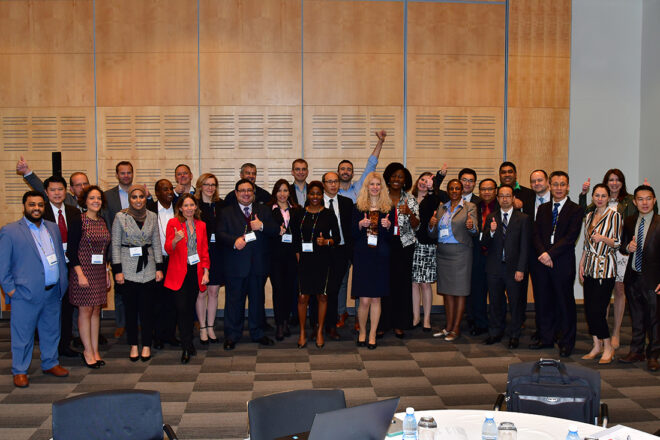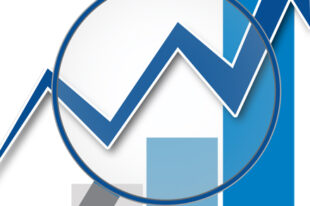IRCP Provides Forum to Discuss Regional, Global Community Synergies

If you want to walk fast, walk alone. If you want to walk far walk together. But, how do we walk far and fast together?
Archana Shirsat
It is important that leaders be daring—that they dare to make change and be willing to shift the boundaries.
Tsakani Ratsela
To evolve, you have to become involved.
Pamela Monroe-Ellis
Pamela Monroe-Ellis, Auditor General of Jamaica and General Secretary for the Caribbean Organization of Supreme Audit Institutions (CAROSAI), succinctly captured the notion that we must be active contributors if we are to transform—a concept thoroughly embraced at this year’s INTOSAI-Regions Coordination Platform (IRCP) hosted by South Africa’s Supreme Audit Institution (SAI) in Cape Town.
The three-day International Organization of Supreme Audit Institutions (INTOSAI) event united global bodies and regions to explore synergies, address the INTOSAI value chain and crosscutting priorities, and foster an integrative approach in developing solutions and aligning efforts.
The meeting kicked off with a new approach—parallel regional and global meetings. The Organization of Latin American and Caribbean Supreme Audit Institutions (OLACEFS) led the regional session, which highlighted innovation and its significance in audit work, while the global gathering focused on overarching concepts most affecting the broader INTOSAI community.
Einar Gørrissen, INTOSAI Development Initiative (IDI) Director General, noted independence remains the biggest issue facing SAIs today and stressed the need to reconfirm its importance, particularly as “there is a close connection between SAI independence and the ability to add value and benefits to the lives of citizens.”
Adding value and benefits to society is a key driver in the work SAIs perform and intertwined into the Sustainable Development Goals (SDGs). As the countdown continues to meet the 2030 deadline in achieving the global goals, IRCP participants shared experiences, challenges, requirements and future outlooks regarding SDG auditing initiatives and contributing to national SDG implementation.
Several delegates noted difficulty in performing SDG audits, primarily in defining what constitutes an SDG audit. An abundance of models and approaches were also cited as challenges.
While establishing a common understanding and a unified approach will require additional research and practice, delegates concurred that mapping and streamlining collective efforts are vital to future SDG work.
Archana Shirsat, IDI Deputy Director General, Professional and Relevant SAIs Department, believes aligning and integrating “will lead to one voice we can stand behind.”
“If you want to walk fast, walk alone. If you want to walk far walk together. But, how do we walk far and fast together?”
Such unity and the required collaborative measures it beckons requires communication—a heavily debated, engaging topic among participants.
Michael Hix, International Relations Director for the U. S. Government Accountability Office and Vice President of the INTOSAI Journal, shared insight on communications and stakeholder engagement and highlighted current internal and external INTOSAI efforts.
Hix asked attendees, who worked in small groups, to tackle questions on information availability, accessibility and alternate approaches. The dialogue identified opportunities for enhanced coordination and awareness in sharing information.
Silke Steiner, representing the INTOSAI General Secretariat, indicated the revamped INTOSAI website (www.intosai.org), tentatively scheduled for launch prior to the XXIII Congress in Moscow, will enrich communication efforts, as the new site will prominently display essential information and links.
The INTOSAI Community Portal is also undergoing a facelift, and the Knowledge Sharing Committee’s representative, Vishnukanth P.B., informed delegates that the new portal (www.intosaicommunity.net) aims to increase data sharing and engagement opportunities.
While the freshly designed websites will better facilitate knowledge sharing, delegates also suggested establishing a forum designed, in part, to develop a single, global INTOSAI communications strategy.
As the INTOSAI community continues to think strategically, the concepts of leadership, evolution and innovation rose to the forefront.
“It is important that leaders be daring—that they dare to make change and be willing to shift the boundaries,” stressed Tsakani Ratsela, Deputy Auditor General, SAI South Africa.
Active dialogue continued on initiatives supporting standards quality and value and moving toward more effective coordination and consultation. Participants also offered perspectives into successful efforts—peer-to-peer projects, blended learning and twinning arrangements—and provided ideas on innovative techniques, such as tailored or customized programs and creating a regional pool of quality reviewers, that can be employed.
Improving performance and enhancing capacity were also significant topics discussed during this year’s IRCP. During his presentation on performance measuring and monitoring, Tiofilusi Tiueti, Chief Executive, Pacific Association of Supreme Audit Institutions (PASAI), asked a key question of participants—what do we really mean by SAI performance?
Tiueti explained that defining performance, perhaps in such a way that focuses more so on quality versus quantity, can lead to more accurate measurement, better informed decision-making and greater sustainability.
As INTOSAI continues forging a path toward progress in achieving its strategic goals, the sentiments Kimi Makwetu—Auditor General of South Africa and Chair of the Capacity Building Committee—shared in his opening remarks remind us that meetings like the IRCP are greatly needed, as they unite delegates on a global scale to share ideas that “take INTOSAI to the next level and beyond.”
Watch the IRCP video story on the Journal’s YouTube channel.





